Behavioural training can be a great way to build and maintain a healthy, trusting relationship with your bird.
This article summarises the key concepts involved in behavioural training, as well as some ideas for starting training at home with your bird.
Positive vs Negative Reinforcement
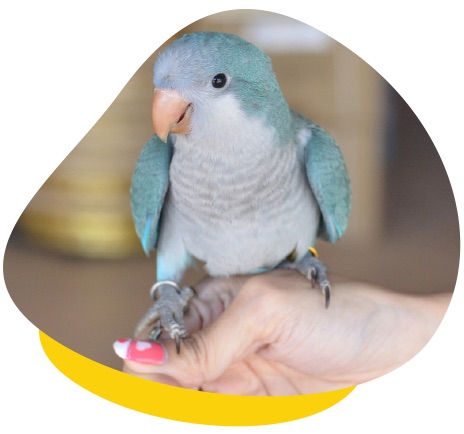
Positive reinforcement
- Something that is paired with a behaviour to increase the desired behaviour.
- Find out what your bird likes and offer this to reward the desired behaviour.
- Examples include food, a head scratch, or a toy.
Negative reinforcement
- Something that the bird dislikes and will try to avoid.
- An example of this is forcing a bird to step up by pushing a hand into the chest or prying toes off a perch.
- Care must be taken, as the use of negative reinforcement can increase aggression and fear responses.
To decide whether something is classified as positive or negative reinforcement, ask yourself “Is the bird doing it because they want to (positive), or because they have to (negative)?”.
Positive reinforcement is preferred in most cases, as this helps build a trusting relationship with your bird.
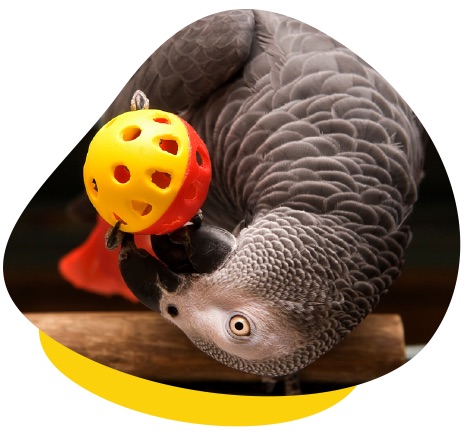
Types of Behavioural Training
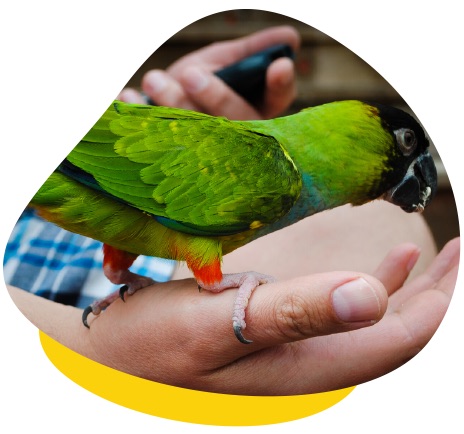
Using cues
- A cue is a sound or signal that lets your bird know what you would like them to do.
- At first, your bird won’t understand this, but a cue can be built into training, e.g. a hand signal or noise.
Using a target
- This means orienting a specific body part towards an object.
- A closed fist is useful for birds as it is easy to hide treats in it. Birds quickly learn to orient their head towards a closed fist.
- A closed fist is useful for parrots with aggressive behaviour as it allows us to work with a bird in a hands off manner. Additionally, it maintains trust and helps build a positive reinforcement relationship.
A Bridging Stimulus (Bridge)
- This is a sound or signal that allows the bird to know they performed the behaviour correctly and that positive reinforcement is to follow.
- This could be the use of a clicker, or the word ‘good’.
- Timing is key. A bridge should come immediately after the correct behaviour is performed, and before the reward is presented.
Shaping with Approximations
- Breaking down desired behaviours into steps, where each step is positively reinforced, and slowly the steps are performed together.
- If the bird develops problems on the way, go back a step, and once that step is mastered, you can begin to move forward again.
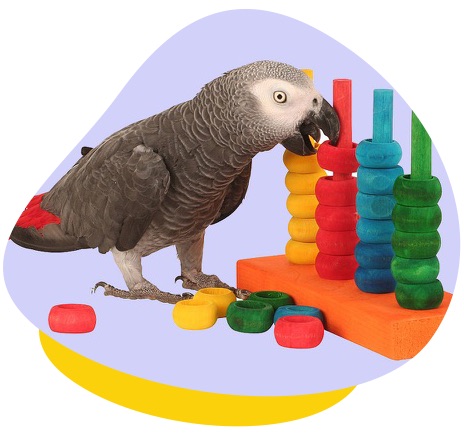
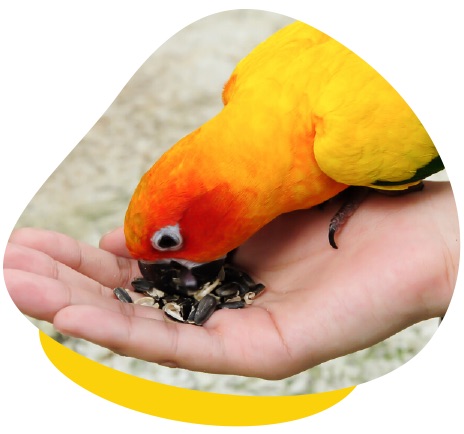
Using Food to Reinforce Behaviour
- ‘Luring’ the bird (using bribery) by showing the bird a treat, is clearly communicating that if it performs the behaviour, it will earn the treat.
- Early in training, it is important to phase out the lure, so the bird doesn’t become reliant on seeing the bribe to perform the behaviour.
- When using food as rewards, it is recommended to save preferred foods for training (e.g. a sunflower seed or pine nut for granivores, honey or fruit for nectarivores).
- Leave the less preferred diet in the cage as the main food source.
- Break food reinforcements into small portions. This means the bird will be less full of food and therefore remain interested longer.
- Avoid overfeeding.
Variable Reinforcement
- Can be used when a bird understands the desired behaviour, e.g. mix using different foods, attention, toys or another thing the bird enjoys.
- This keeps the desired behaviour strong; birds are more likely to perform a behaviour when variable reinforcement is used.
‘Jackpot’ or Magnitude Reinforcement
- During a training session, if a bird offers an approximation or behaviour that is exceptionally desired, offer a jackpot. This is a bigger and better reinforcement to let the bird know it did exactly what you wanted.
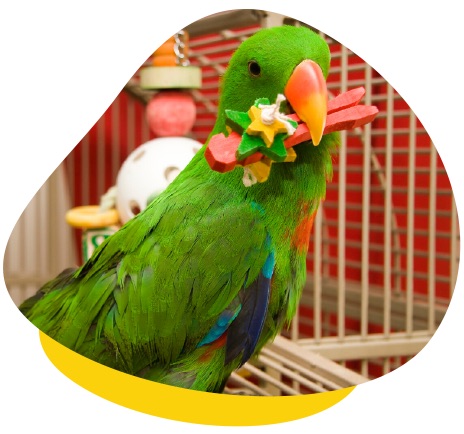
Examples of Behavioural Training
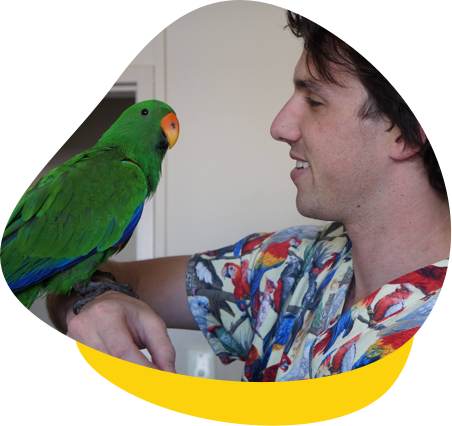
Target Training
- Pick a hand that you will always use to offer food reinforcement. Hold several treats in your hand at a time (in a closed fist) and roll individual pieces up to fingertips when ready to reinforce the bird.
- Offer a bird a few treats from this hand.
- Right before the bird gets a treat, give the bridging stimulus (a clicker or a trigger word such as ‘good’).
- After 2-3 times of the bird taking food from the hand, try hiding the food in your fist, and moving your fist slightly to the side of the bird. If the bird makes any motion towards your fist, bridge and reinforce.
- Gradually increase the distance the bird needs to move before receiving the bridge and reinforcement. A bird will gradually learn to do this in just a few minutes. If you don’t feel comfortable using your hand as a target, it is also possible to use a ball on the end of a stick or something similar.
Spin or Turning around
- This is good for aggressive birds or birds that are hand shy as it doesn’t involve handling.
- It can usually be learned in 1-2 20-minute training sessions.
- Use a training perch that allows you to move your hand underneath it.
- Initially the target hand and the bird’s head move in unison.
- As the bird starts to understand what they need to do to get the treat, the distance the hand is from the perch increases and gets nearer to the trainer.
- The target hand finishes the circle faster than the bird, so it becomes less of a lure and more of a cue.
- Reducing cues teaches the bird to be more focused on the desired behaviour.
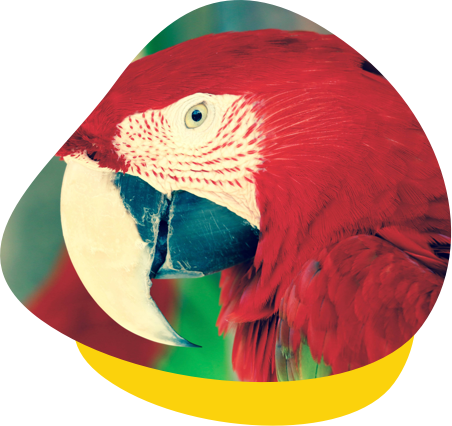
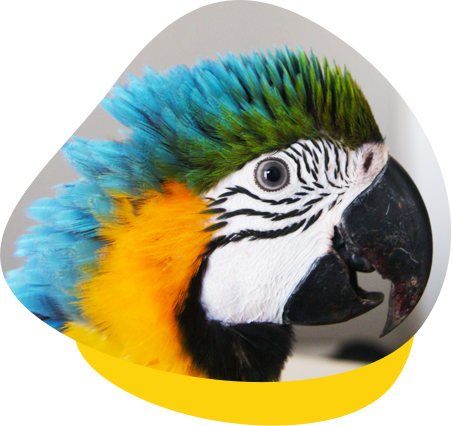
Tips for Success
- Be clear about the behaviour you are trying to train.
- Read your bird’s cues: if they seem interested in a training session, go for it, if they seem distracted, try again later.
- Have a specific training perch or area away from the main cage/play area that your bird will recognise as a training area.
- Keep training sessions to a maximum of 20 minutes each.
If you have concerns about your bird’s behaviour, or have further questions about bird training, please don’t hesitate to get in touch with one of our bird vets.

